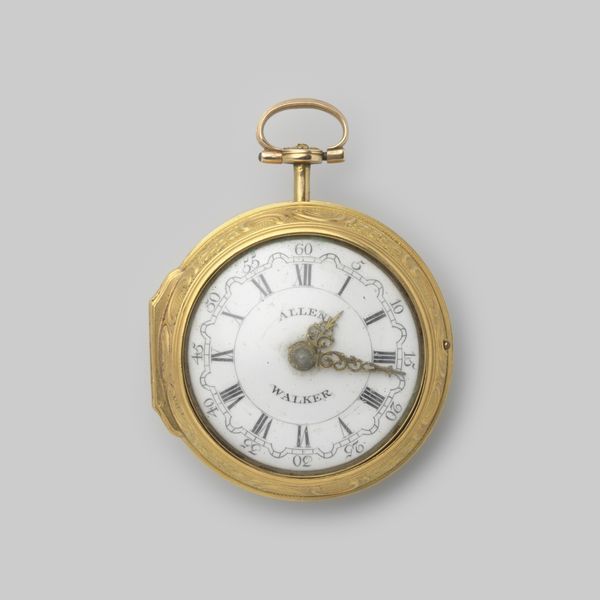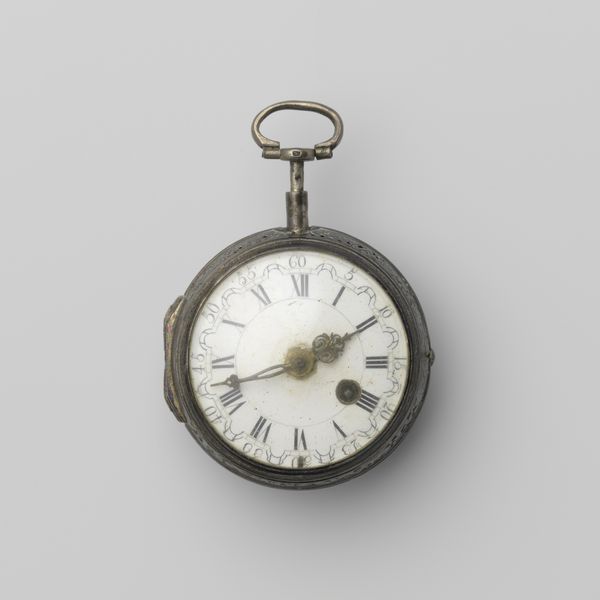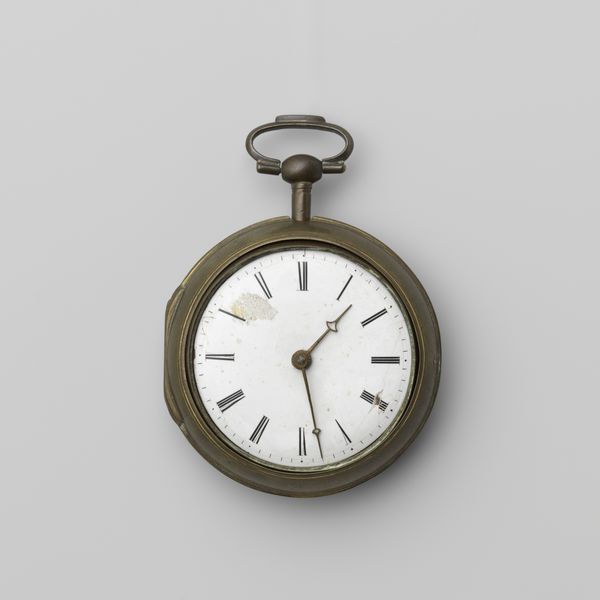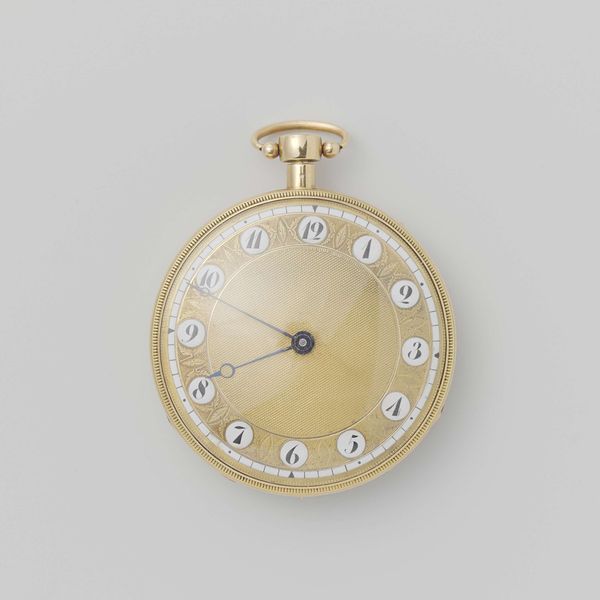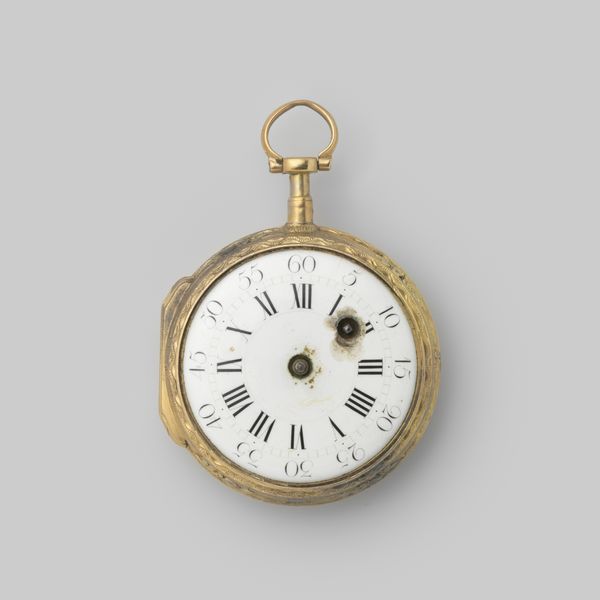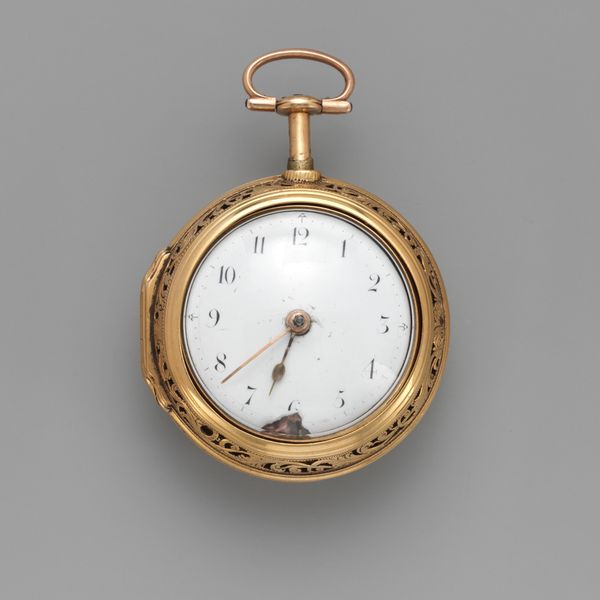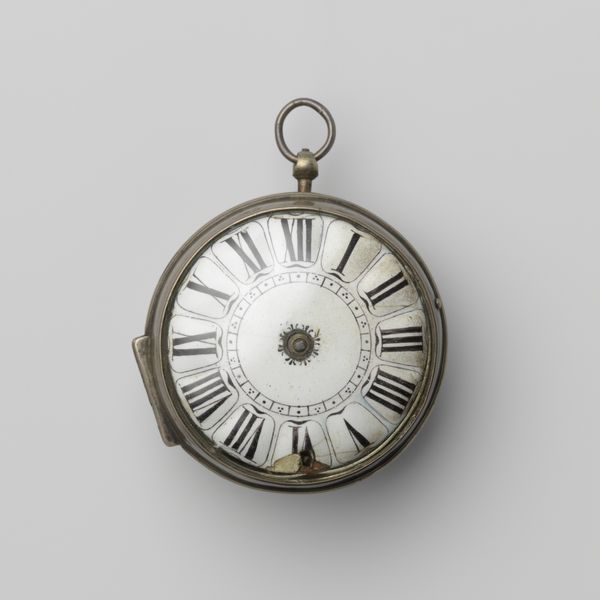
metal, photography
#
portrait
#
metal
#
photography
#
decorative-art
#
miniature
Dimensions: diameter 6 cm, height 8.4 cm, width 6 cm, depth 2.5 cm
Copyright: Rijks Museum: Open Domain
Editor: Here we have a gilded copper watch, dating from somewhere between 1800 and 1900, maker unknown. What strikes me immediately is the beautiful detail of the numerals. What can you tell us about it? Curator: Let's consider the materials. The "gilded copper" designation is interesting. Gold, historically, symbolizes wealth, power, and status. But here, we have copper underneath, a more common metal. How does the act of gilding alter the perceived value and social meaning of this object? Editor: So, the materials themselves carry a social message, beyond just telling time. Curator: Exactly. The labor involved is also key. The creation of such a piece, even with copper, demands skilled craftsmanship. Was this mass-produced, or a unique piece? The difference impacts our understanding of the clock’s place within the evolving industrial landscape of the 19th century. Think about who would have been making it, under what conditions, and for whom? Editor: I hadn't thought about the actual production so much. Did the rise of industrial watchmaking affect these artisanal techniques? Curator: Absolutely. This clock sits at the crossroads. On the one hand, the gleaming allure of the gold finish whispers prestige, hinting luxury and quality; on the other, the humbler copper and, depending upon how it was made, perhaps emerging mechanization of its creation starts to hint at a democratized form of time-telling, more easily available to the emerging middle classes. Was it truly precious, or just appearing so? Editor: That's fascinating! Looking at it now, I can see how the materials and construction reflect these shifts in society and manufacturing. Curator: Indeed. Considering objects as embodiments of production and consumption opens up new perspectives on their role in history. Editor: I'll definitely look at artworks differently, thinking about the labour and context that shaped them. Thanks!
Comments
No comments
Be the first to comment and join the conversation on the ultimate creative platform.

